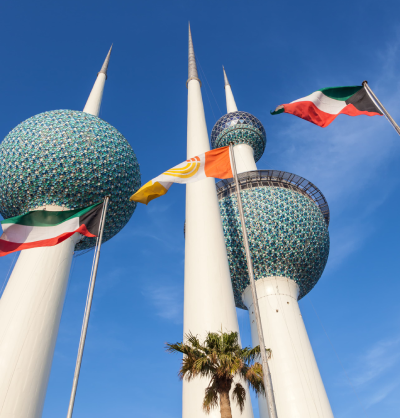AFTER Ukraine and Gaza an old-new conflict flared up in the Red Sea, a crucial waterway for global trade, particularly between Europe and Asia. The Iran-backed Houthis (Ansar Allah) launched more than 30 attacks on international commercial and military ships since late 2023, prompting delays and costly rerouting of goods and energy supplies via South Africa’s Cape of Good Hope, causing losses for Egypt’s Suez Canal. The Houthis have been using the Israel-Hamas war as a pretext for the attacks in a bid to raise their profile and garner support both domestically and internationally. However, their actions also support a wider effort by the Iran-Russia-China bloc to set in motion a domino-effect and recreate the long-established regional and international order by reshaping the traditional trade routes. All that in the lead up to the super election year in Europe and the United States (US).
The Red Sea’s Growing Importance
The horizontal expansion of the wider conflict is another opportunity to pressure the international community, particularly the European Union (EU), which relies on the shipping lane for a significant amount of its trade (around 20% of exports and imports) and energy supplies (from the Arab Gulf) and has been grappling with the economic fallout of the COVID pandemic and Russia’s invasion of Ukraine. Some of the EU’s main trading partners are in the Indo-Pacific region, including China, India, Japan and South Korea, and Asia accounted for the largest portion of EU’s international trade in 2022 (36% of all extra-EU trade). Besides trade, the Red Sea is a crucial sea line of communication for naval vessels transiting between the Mediterranean Sea and the Indian Ocean, including for the French and US navies. The strategic importance of the Red Sea, Bab El-Mandeb and the Suez Canal is only set to increase in the future as economic ties between Europe and Asia and the Gulf countries expand and as Saudi Arabia realises its major Red Sea development plans, while the US and Europe shift towards the Indo-Pacific, notably India.
The Struggle to Control the Red Sea
Over the years, the Red Sea has attracted interest from great and middle powers alike and has a high concentration of foreign military bases, particularly on the African side. Significantly, China chose Djibouti near Bab El-Mandeb to establish its first foreign military base in 2017, while Russia and Iran have long sought to establish their foothold in the area — the latter via Sudan and Eritrea and the former found a way via the Houthis in Yemen and occasional deployments of Iranian naval vessels. The Houthis have attacked commercial shipping and naval vessels in the area since 2015. They have become an integral part of Iran’s redesigning of the regional order by encircling its Arab Gulf adversaries via proxies in Iraq, Syria, Lebanon and Yemen and gaining access to other key waterways beyond the Gulf and the Strait of Hormuz—the Mediterranean Sea, the Red Sea and the Bab El-Mandeb—which enable it to pressure Europe, the Arab Gulf countries, and by extension, also the US. Thanks to their growing alliance in recent years, Moscow is able to call on Iran’s assets to aid in its larger ambitions (and vice versa).
The Houthis and the Iran-Russia Axis
Seeking to take over Yemen, the Houthis have firmly positioned themselves in the bloc with Iran and Russia long before the 7 October Hamas attack in Israel. A UN Panel of Experts confirmed that Iran has been supplying increasingly sophisticated weapons and components to the Houthis since at least 2009. Since then, they have frequently met with Russian and Iranian officials and engaged in training with the Islamic Revolutionary Guard Corps (IRGC), Hezbollah, Hamas and other Iran-backed groups across the region. After Russia’s invasion of Ukraine in 2022, the Houthis were also among the first to recognise the unilateral proclamation of independence of “the Donetsk and Luhansk People’s Republics” from Ukraine. Simultaneously, Russia has provided political clout to the Houthis and Iran in the UN Security Council (UNSC), for example, by abstaining from Resolution 2216 in 2015, which imposed sanctions and an arms embargo on the Houthis, by vetoing a UNSC resolution in 2018, which meant to extend the sanctions and blamed Iran for violating the embargo. Most recently, Russia abstained from the UNSC Resolution 2722 (10s January 2024) that condemned the Houthi Red Sea attacks ‘in the strongest terms’ after Moscow’s amendments that sought to link the situation to the Israel-Hamas war were refused.
International pressure on the Saudi-led Coalition that culminated in the UN-backed conference in Stockholm in December 2018 was crucial for the Houthis to secure the strategic Hudaydah port, a key gateway for smuggling, including of weapons and people, and control of humanitarian aid. With the Houthi control of Bab El-Mandeb and Iran’s control of the Strait of Hormuz on the other side of the Arabian Peninsula, they are able to cut off a significant portion of global trade and energy supplies. They jointly tested their abilities to inflict large economic losses on their adversaries several times before, including during the Houthi attacks on Saudi Aramco facilities in Abqaiq and Khurais in 2019 and the United Arab Emirates’ (UAE) Jebel Ali port in 2021 as well as Iran’s attacks on tankers in the Strait of Hormuz that intensified since 2019.
Regional Instability and Trade Routes
Iranian threats to close the Strait of Hormuz led Saudi Arabia to build the East-West pipeline in the 1980s to transfer oil from the Eastern Province across the country to its Red Sea coast—the same pipeline which was affected by the Houthi attacks in 2019. The current crisis and continued instability in the region might also prompt efforts to find different trade routes if the region is deemed too unstable. The major India-Middle East-Europe Corridor (IMEC) announced in September 2023 aimed to save time and costs for trade between Europe and India via the UAE, Saudi Arabia, Jordan and Israel, bypassing the Bab El-Mandeb Strait. The IMEC would strengthen economic ties between its members, while leaving out other large players like Iran, China and Russia. Largely seen as a competition to China’s Belt and Road Initiative (BRI), the IMEC could also endanger the International North-South Transport Corridor (INSTC) linking India and Russia via Iran and Azerbaijan, which would be complemented by the Gulf-Central Asia corridor involving India, Iran, Kazakhstan, Oman, Pakistan, Turkmenistan and Uzbekistan, among others. The INSTC also has a potential to be linked with the BRI and further solidify ties among the members and partners of the BRICS+ and the Shanghai Cooperation Organisation. The importance of INSTC has increased in the aftermath of Russia’s war in Ukraine due to its potential to offset the impact of Western economic isolation and sanctions against Moscow and Tehran. As IMEC is currently sidelined due to the Israel-Hamas war, Russia could seek to benefit from prolonged tensions in the region by promoting the INSTC and the Northern Sea Route along the Russian Exclusive Economic Zone in the Arctic, which would divert shipping from the Suez Canal and potentially change the trade flows between Asia and Europe in the long run.
The European Response
The Netherlands, Germany, Italy, France, Spain and Belgium together accounted for 75% of the EU’s seaborne imports and exports in 2022. The Netherlands was the only EU country that openly provided support to the joint US-UK airstrikes on Houthi military positions in Yemen, alongside Australia, Canada and Bahrain, in mid-January 2024, while Germany and Denmark, whose shipping major Maersk has been affected by the destabilisation, endorsed the action in a statement. France, Italy and Spain refused to join the US-led Operation Prosperity Guardian mission under the US command but operate and coordinate in the area. Two months after the Houthis launched the attacks, the EU countries are discussing the establishment of their own naval operation in the Red Sea that would be independent from the US-led mission—much like in 2020, when they established the Operation Agenor at the French base in Abu Dhabi to protect shipping in the Strait of Hormuz from attacks. The EU countries have been in talks about involving third countries affected by the Houthi attacks and those that share the values of freedom of navigation in the naval mission as the Union seeks to boost its influence in the Gulf region, carve out a distinct policy from the US and step up its role in defence. Meanwhile, on 19 January, nine days after Beijing and Moscow abstained from the UNSC Resolution 2722, the Houthis vowed to ensure a safe passage for their vessels via the affected area.
Zooming Out
The current crisis in the Red Sea should not be viewed through the lens of the Palestinian-Israeli conflict, regardless of the Houthis’ and Co rhetoric. In the past, the Houthis have sought to disrupt the Arab Gulf countries’ economic activity for their involvement in Yemen on behalf of the internationally recognised government, today they are targeting commercial vessels in the Red Sea in the name of Palestine, and in the future, with growing capabilities and profile, they will find a different reason, or another friendly militia will spark a crisis elsewhere in the region. Attacks by the Houthis and other proxies are unlikely to end as long as they have the material capabilities and countries such as Iran and Russia continue to benefit from regional instability. For better or worse, the latest Red Sea crisis showed that the EU needs to get its priorities straight and get more involved with partners in the region to be able to identify and counter threats to its strategic interests and avoid playing a catch up later on.








